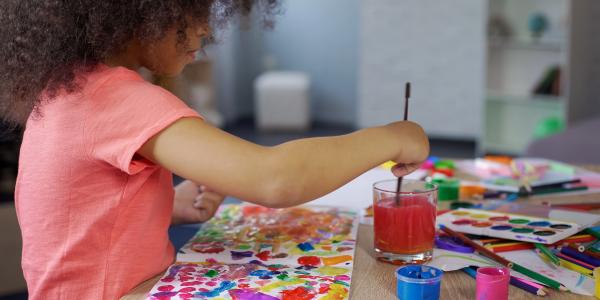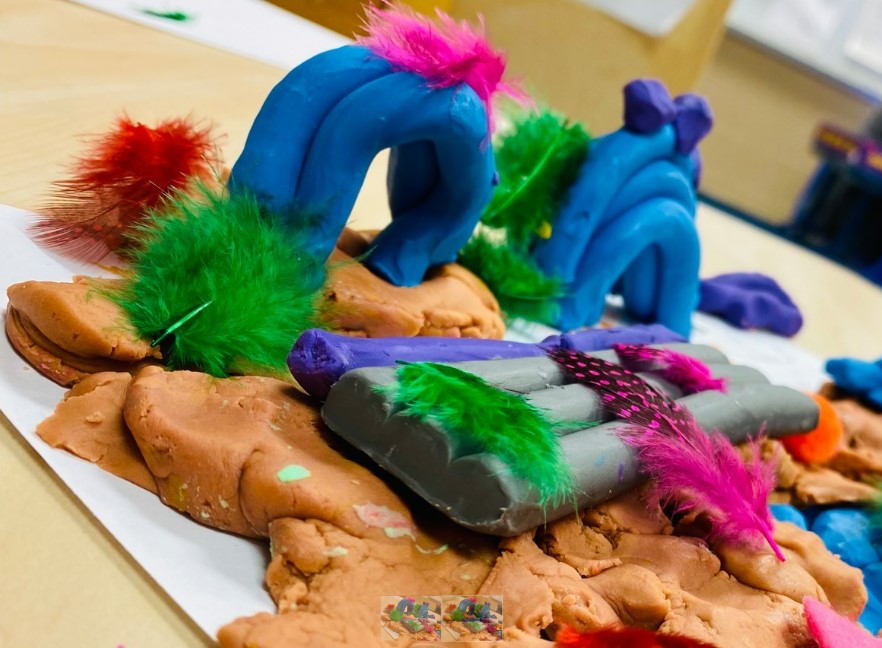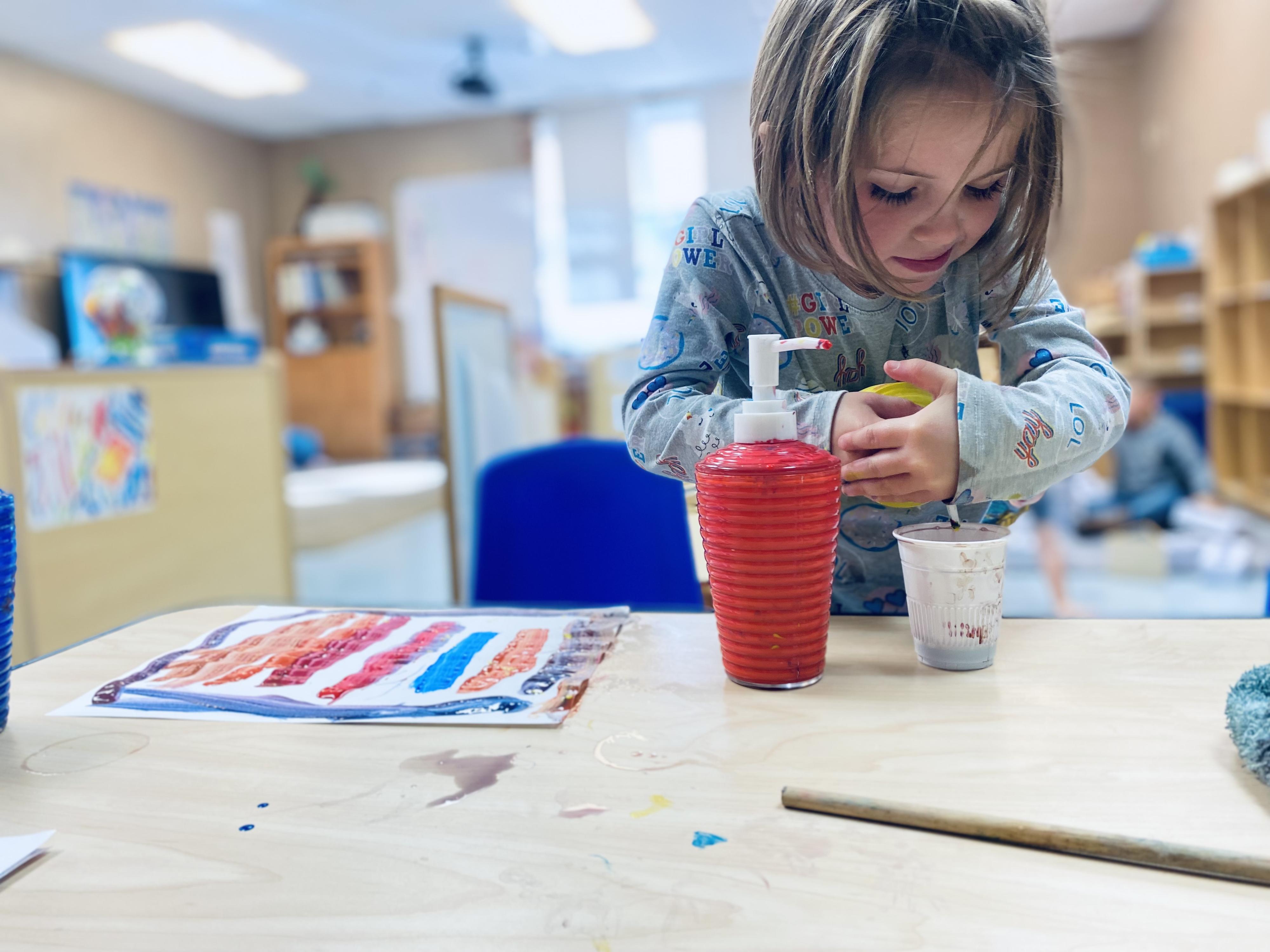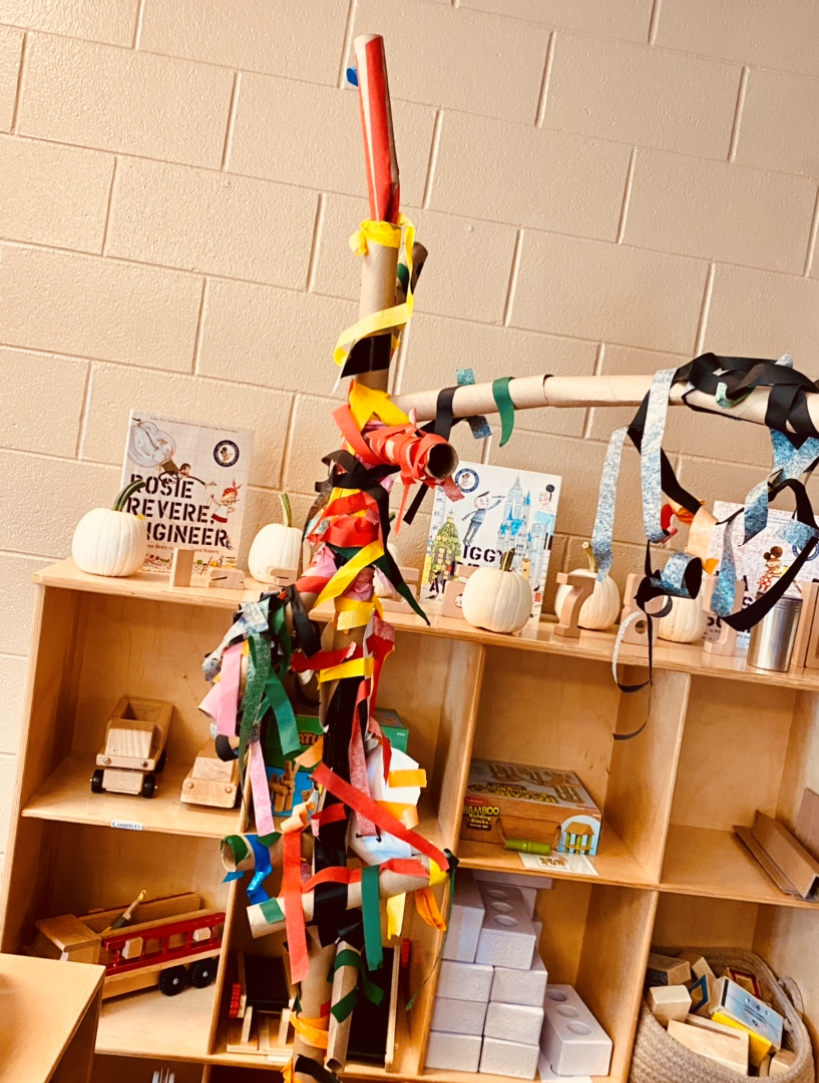The Value of Documenting Process Art

Head Start preschool educator Amanda Messer offers insight into how young children can demonstrate early learning goals through engagement in process art. She shares tips about how other educators can observe the same in their early learning programs and provides an example of what it can look like. Her piece complements ideas presented in Teaching Young Children’s Winter 2023 issue. Check out the issue for more ideas and examples of integrating the arts into preschool settings.

Early childhood educators often face a dilemma—how to effectively meet children's interests, strengths, and needs amid competing obligations, such as the responsibility to address program, state, administrator, and family expectations. This struggle is especially prevalent when considering how to integrate the arts into the early childhood curriculum (Russell 2019). Although the benefits of arts integration abound, there is enormous pressure on early childhood professionals to meet standards-based outcomes. In addition, early childhood professionals may feel the need to introduce art projects that create uniform or aesthetically pleasing products to showcase for families, colleagues, and supervisors. Too often, these projects become an exercise in fine motor skills or following directions rather than nurturing a child’s creativity and curiosity.
In the early learning settings where I’ve taught, I have identified and practiced ways to achieve learning goals and outcomes through process-focused, open-ended art experiences. One essential practice that has helped is documentation, which is the process of observing children’s growth and learning experiences and capturing these events. Documentation involves taking photographs and videos, collecting work samples, making transcripts, and writing observations at various stages of children’s work and play. After the process is over, it’s time to share the documentation along with the children’s work samples.
Here, I share three tips so that you can communicate the value and benefits of process art to families, colleagues, and administrators. With each recommendation, I also share a recent experience with a child in my program to illustrate how this works in practice.
1. Document the process.

During a recent fall afternoon, I sat in the dramatic play area with 4-year-old Kaytee, who was pretending to be a veterinarian. Suddenly she said, “I have to paint now,” and headed toward the art center. From my years as an educator, I recognize these familiar moments as opportunities to document a child’s art-making process. So, I got out my notebook and began to take dictation. I also took images of Kaytee at different points throughout her process as she transitioned from one medium to the next.
Because engagement with open-ended art can enhance development in multiple domains, there are many opportunities for documentation, so be sure to include various forms. For example, photographing children’s faces offers a window into their cognitive engagement during the process. You can also include images that show children’s fingers and hands as they develop fine motor skills. In addition, using a recording device to capture moments of children interacting with one another and with adults as they make art can give insight into their social interactions and communication skills.
2. Connect the documentation to learning goals.
As Kaytee spent more time at the art center, she demonstrated numerous skills reflected in Kentucky’s Early Childhood Standards, with which my Head Start early education program is aligned. For instance, she transitioned from experimenting with paint colors to forming letters. “I’m working hard on this art,” she said, acknowledging her effort, “and now I’ll color my K. Blue for the K.” When Kaytee produced the letter K, she began to integrate letter writing into her art process, reflecting Benchmark 3.2, “Shows interest and understanding of the basic concepts and conventions of print” (Language Arts 3s and 4s).
After that, she began to consider the physical properties of the art materials. “I’ll do an experiment with the water. I need to experiment with ingredients,” she said as she dropped different paint colors in the water and stirred. “If we freeze this, it could be a popsicle.” Kaytee’s understanding that water could freeze and become solid exhibited aspects of Benchmark 1.1, “Explores features of the environment through manipulation” (Science 3s and 4s).
Families and administrators can see the value of the open-ended, art-making process if you can draw direct connections to educational goals and expectations. These goals may be tied to a variety of sources, such as a program curriculum and/or state early learning standards, which can cut across the developmental domains.
3. Share the documentation.
 We value children’s creative efforts by displaying their work throughout our setting. You, too, can share documentation and samples informally or formally: you might turn your setting into a gallery of children’s art, for example, or you could exhibit their work through a digital platform, such as an email newsletter, a secure class blog, or your family communication app. Regardless of how you present their work, it’s important to be mindful of different ways to make documentation accessible to all families.
We value children’s creative efforts by displaying their work throughout our setting. You, too, can share documentation and samples informally or formally: you might turn your setting into a gallery of children’s art, for example, or you could exhibit their work through a digital platform, such as an email newsletter, a secure class blog, or your family communication app. Regardless of how you present their work, it’s important to be mindful of different ways to make documentation accessible to all families.
As you think about how to share, consider what to share as well. Positioning information such as learning goals and developmental benchmarks alongside samples and documentation invites families, colleagues, and administrators to see learning and growth reflected in children’s process-focused art; and including photos or video of capable children deeply engaged in process art communicates the effort and thinking it takes to accomplish their creations.
References
Russell, C.L. 2019. Integrating Art into the Inclusive Early Childhood Curriculum. Champaign, IL: Common Ground Research Networks.
The Governor’s Task Force on Early Childhood Development and Education. 2020. Kentucky’s Early Childhood Standards. https://kyecac.ky.gov/Documents/kentucky-ec-standards.pdf.
Amanda Messer is an early childhood professional with more than 25 years in the field. She has worked as an infant teacher, a toddler teacher, a preschool teacher, a curriculum facilitator, a developmental interventionist, and a center director. She is currently in a preschool classroom at Waynesburg Elementary and is actively working to align her practices with Reggio Emilia philosophy. She has undergraduate degrees in English and psychology and a master's degree in family and consumer sciences.